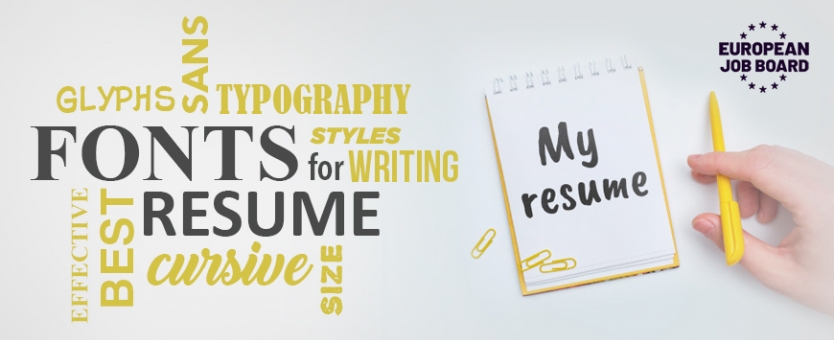


There are sundry font options available. Determining the best lettering for a resume can sometimes daunting.
Keep in mind, an employer typically scans your resume for a brief 20–30 seconds.
Selecting a font that’s simple and easy to read is key.
Plus, a good type shows your adeptness and surges readability. It gives your CV a chance to make it to the top of the pile.
Most people know the basics of not using low-quality paper, graphics, or multi-colours, Comic Sans fonts in their resume. But, are these the only tips to write an effective Curriculum Vitae?
So, what is the choicest font for a resume and which fonts to elude? Which is the suitable lettering size? How to deal with those pesky section heading titles without overemphasizing them?
So many questions surround when it comes to resume writing and choosing a typeface.
Here are our endorsements -
Best Resume Font Size
A resumes font size should be between 10 and 12 points. Headings can have their typeface set to 12-14 points.
Best Font for Resume
You can choose from the below fonts to write a resume.
1. Avenir
2. Calibri
3. Cambria
4. Constantia
5. Corbel
6. Franklin Gothic
7. Garamond
8. Georgia
9. Gill Sans
10. Helvetica
Basic book print fonts like Arial, Verdana, Calibri, and Times New Roman work well. However, if you are applying to a position in graphic designing or advertising, employers might be open to alternative typeset and creative style.
You can enhance the heading sections – make them a little larger or bold. Keep side margins a standard width. Bear in mind the white space ratio too. Make your name stand out also it must be placed at the top of your resume. You can increase the font of your name and make it look slightly big.
Related:- Resume Writing: Tips for a Professional CV Step by Step
What About Italics and Bold?
Bold text is for drawing attention to particular word/words. Without increasing the font size of the titles bolding them helps subtitles stand out.
Italics are useful for supporting text which highlight places like the city and state or a degree listing, for example.
Avoid underlining words or phrases. It makes the document feel cluttered.
Be Consistent
Don not overuse capitalization, bold, italics, underlines, or other emphasizing features. Stick to maximum single or two fonts, with proper sizing.
Key Takeaway
So, what do you think? Choosing a typestyle is not that tough. Selecting suitable resume fonts boils down to this:
1. Make sure the resume format is legible and easy on the eyes.
2. Use a universal font that will every computer supports
3. Differentiate headings and section titles by intelligently using proper text size, using bold, and pairing fonts together.
Also read:- 7 Things Recruiters Love to See in Your Resume